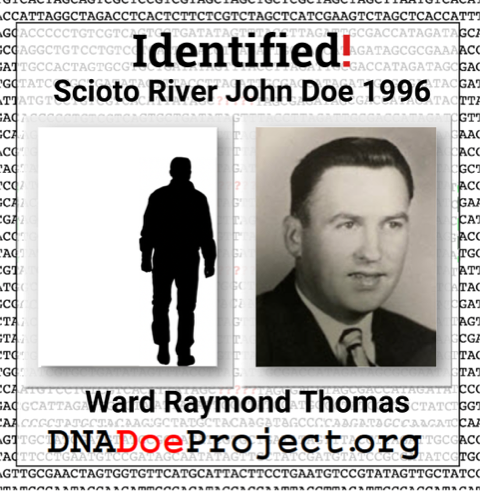Skull found in Scioto River 27 years ago identified as missing man
CHILLICOTHE, Ohio (WCMH) – A skull found in the Scioto River 27 years ago has been identified using genetic genealogy as an Ohio man who vanished in 1972.
The DNA Doe Project, a nonprofit organization dedicated to using genetic genealogy to identify John and Jane Does, in a partnership with the Ross County Office of the Coroner, has identified remains found in the Scioto River in 1996.
Two juveniles shot in east Columbus Tuesday night
The skeletal remains were identified as belonging to Ward Raymond Thomas of Muskingum County. Thomas, 54 years old at the time, disappeared from a Veteran’s Medical Facility in Chillicothe, Ohio in 1972. It would be 24 years before his skull was located in the Scioto River.

In 2022, investigators with the Ross County coroner’s office brought the cold case to the DNA Doe Project, hoping to discover the man’s identity. The coroner’s office had obtained a grant to help fund the thousands of dollars of lab costs needed to develop a DNA profile suitable to upload to the databases used by law enforcement, according to the DNA Doe Project.
A bone sample from the skull yielded a workable profile and a team of volunteer investigators began working on identifying the remains in November 2023. In less than two weeks, they were able to connect a handful of second and third cousins in a family tree, leading to Thomas’s branch.
“The identification was made on Thanksgiving day. Being able to have a name and locate older newspaper articles about his disappearance on a day to be thankful for family, to be able to gather was very meaningful,” said team leader Julie Bracker. “We are also thankful that distant relatives who didn’t even know about Ward took the time to upload their DNA data to GEDmatch.com.”
Genetic genealogy combines DNA test results with traditional genealogical methods to determine genetic relationships between individuals. Investigative genetic genealogy work generates a lead which is provided to investigators working in law enforcement and coroner offices, the DNA Doe Project said.
Confirmation of the lead can take several months to years depending on the availability of dental records and DNA from close family members.
For the latest news, weather, sports, and streaming video, head to NBC4 WCMH-TV.
